Lead Generation with Blog Posts and Content Marketing
Inbound marketing with blogs. Attracting the right B2B and B2C customers is the key to success. A popular and proven form of lead generation is online presence via a blog. But why do so many companies rely on blog posts for lead generation?
Lead generation with blog posts has emerged over the past decade as a very effective method for customer acquisition. A blog is an online journal, consists of several blog posts and is considered the first choice for content marketing. At the heart of the blog is a core topic.
How to write blog content that generates leads.
A blog attracts exactly the people you want to target with your customer approach, with the most important keywords and your optimal solution for their acute need (search intent).
More About Lead Generation:
Benefits of blog articles and why the blog plays a big role in content marketing
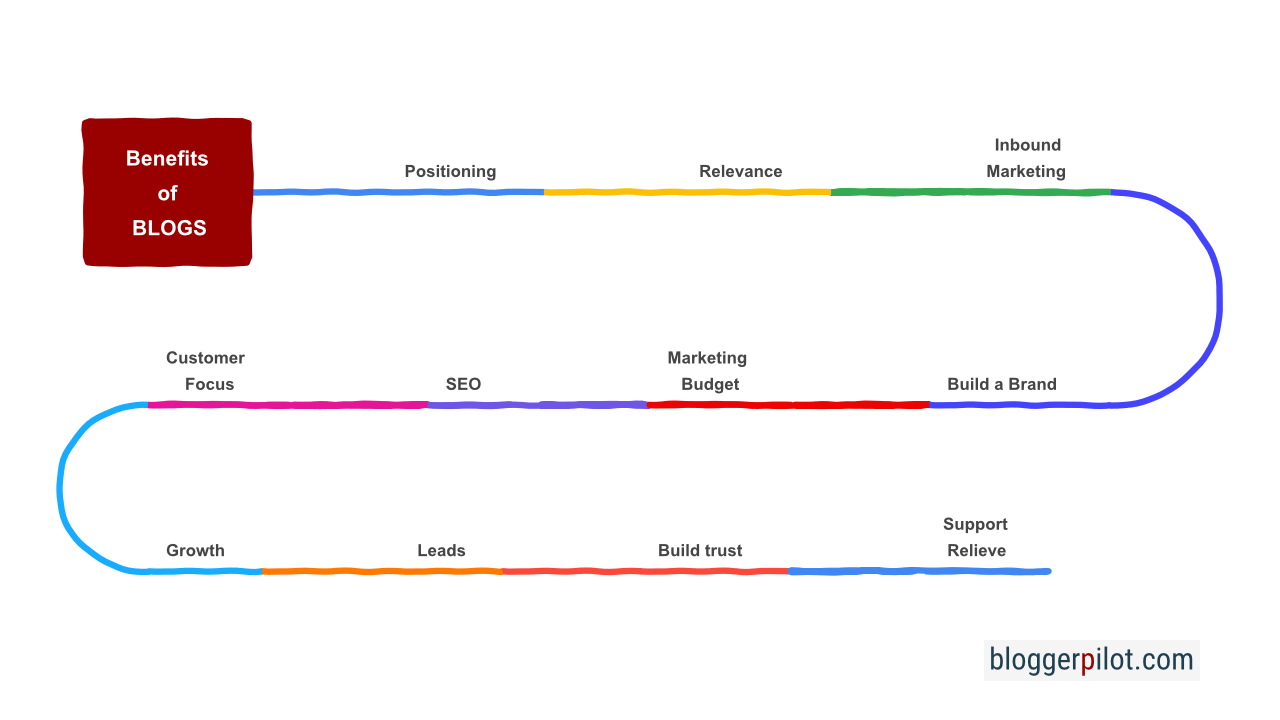
There are many reasons that speak for lead generation with content. I will go into more detail on the most important arguments below:
11 advantages of a blog
- Better chances of landing high in the search engines
- Gain expert status
- Increase relevance on Google with backlinks
- Communication channel for prospects and customers
- Build brand loyalty
- More marketing budget for other marketing activities
- Build trust and customer intimacy
- More growth through sales funnel or customer journey
- Collect high quality leads
- Increase credibility
- Reduce the workload of other departments
1. Blog articles improve your chances of ranking high in search engines
With a blog, you can attract more visitors to your website and increase your reach on social networks. A Sistrix study on click probability found that 99.1% of search engine users click on positions 1 to 10 – that is, opt for a search suggestion on the first page. So if you want to show up on the web as a problem solver, you have to take steps to appear high up in Google’s rankings, since most people don’t even jump to the second page. Regularly publishing new search engine optimized content on a company blog is an effective way to get closer to this goal.
2. You take an expert status in your blog
Calling yourself an expert convinces very few people. In order for potential clients to trust you, you need to manage to establish yourself as an expert in your field through action. You can use your expert blog to provide helpful value and help your community with problems you know about
If you stay in your website visitor’s mind, they will first type your site into the search engine to learn about your core topic. Then you’ll have built a strong foundation of trust and will be able to convert some of your visitors into customers through well-placed call-to-actions (CTAs). By the way, this is also a good basis for a high-priced offer. People are already willing to spend more money if they are already convinced of the quality.
3. You increase with backlinks in your posts the relevance in Google
Do you rather choose a restaurant with many good reviews or one without reviews? Backlinks are like digital recommendations or to be compared with word-of-mouth. They signal to the search engine that you provide quality content that can be trusted. Based on the quality and quantity of backlinks, the relevance of a website is assessed and thus has a positive effect on your Google ranking.
4. A blog is a communication channel for prospects and customers
A blog provides a good platform to provide visitors with valuable information such as how-to guides, but not only that. Through the comment feature and other call-to-actions, you encourage your website visitors to get in touch and share. This personal touch fosters a bond between you and your community.
5. You can humanize your brand with your blog
Your brand is more than your company and your product or service. A brand includes the company philosophy and personal values. So you can’t just technically present a company that sells anything, you can put a face to your company. This is what people really want and need: a personal connection and a strong relationship of trust. On a professional and above all on a human level.
6. You have more marketing budget with a free or inexpensive blog
In principle, having a blog is free. Of course, it depends on whether you hire an external copywriter via platforms like Textbroker, a freelance copywriter or a copywriting agency. If you do it yourself, it will cost you your time, but you don’t have to invest any money in it, leaving you with more budget to spend on other marketing activities.
7. Good content keeps readers coming back, builds trust, and keeps customers coming back
The more often you create strong SEO content with relevant keywords, the more often visitors will land on your site. Those who perceive you as a helpful source will independently look for news on your blog and, if needed, specifically look to you for solutions such as products or services.
8. More growth through a sales funnel or customer journey
A blog post can be a touch point in your sales funnel. It’s a good idea because you already know that there should be a concrete interest in information or an interest in buying. Otherwise, the visitor would not have landed on your blog at all. You can therefore assess very well which phase your lead is currently in and place effective call-to-actions for this phase.
9. You come across high-quality leads on your blog
Visitors who come across your search engine optimized blog post have entered terms that show their search intent. This means that there is already a concrete interest in your topic. So unlike cold calling, you already have high-quality leads that you can more easily convert into paying customers. There is no need for tedious and usually expensive pre-selection.
10. A company blog increases your credibility
A study on the credibility of company blogs looked at the comparison between company blogs and other sources of information. The result: company blogs are demonstrably perceived as more authentic than classic company websites.
11. With a company blog you can relieve departments such as support
You can create exactly the content in your blog that is often asked for or searched for according to your experience and your SEO analysis. Blogposts with instructions and other useful information relieve other departments like support.
The blog – Mostly a significant role in content marketing
Can you generate a great reach with blog articles?
If you’re serious about it, then absolutely!
You have to realize though, as in all other areas of content marketing, creating and maintaining a blog will cost you time.
Search engines have the task of providing the most valuable answers to the question or the search terms typed in from the vast amount of information that the web holds. The search engine searches, indexes and evaluates. It crawls URLs and the content of matching web pages. It prioritizes text formatting such as headlines, subheadings and subheadings as well as keywords in the content such as texts and image descriptions. With a blog, you can address targeted topics in the individual blogposts and optimize your SEO content particularly well so that search engines display it as relevant content in the SERPs.
The nice thing is, you can build and run a blog completely free of charge if you want to. With many helpful tools you can create your texts, images, videos and graphics partly for free and optimize them again and again. Unlike social media marketing, for example, your blog is a sustainable content marketing measure, because posts are quickly forgotten. Well-maintained blog posts, on the other hand, improve your ranking permanently.
Blog articles are so popular in content marketing because they can be published for free or at low cost and directly address the right target group. Unlike other marketing activities, the blog is also particularly sustainable.
Bloggerpilot
Blog Article Writing: What makes a good blog post
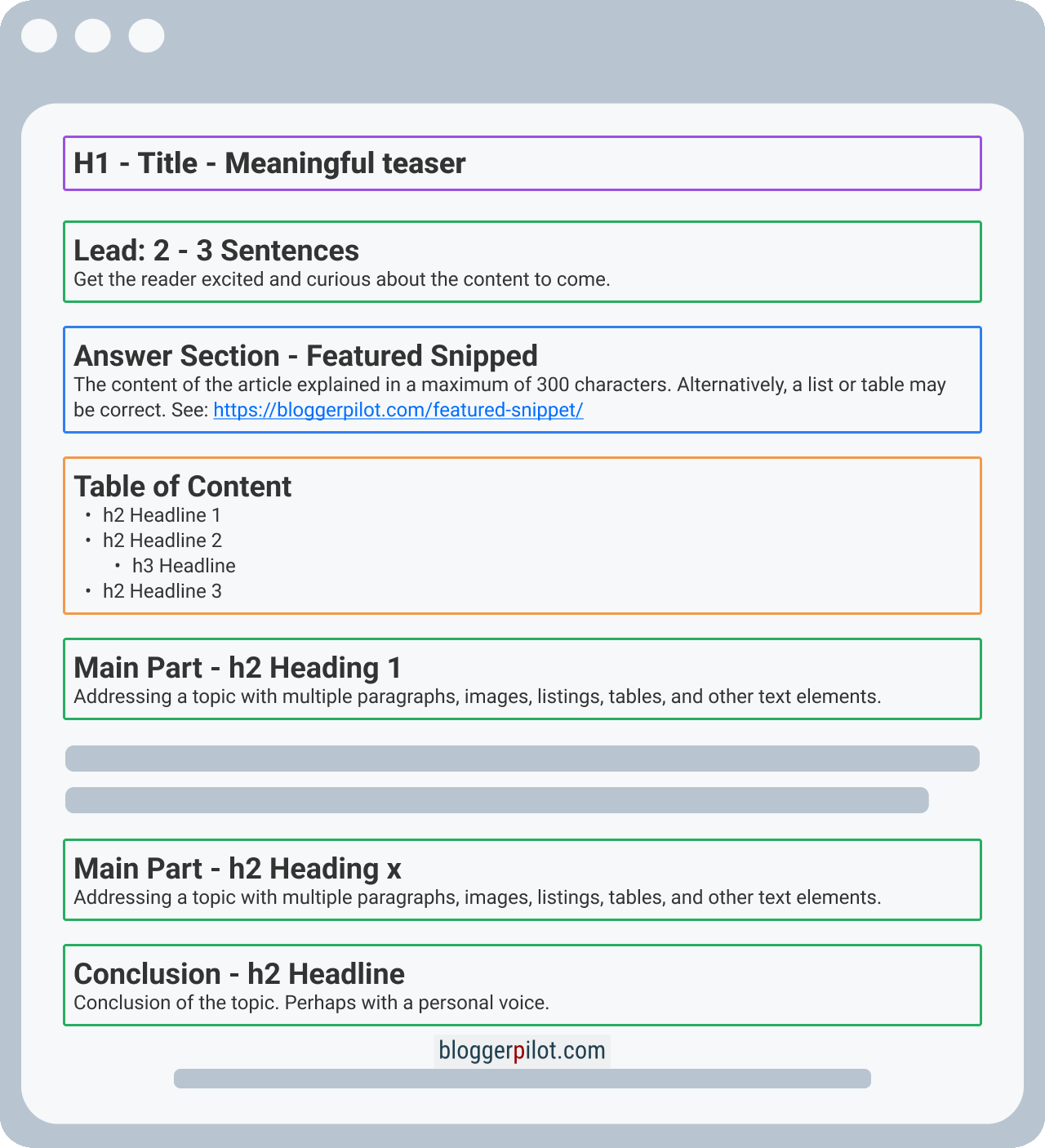
A good blog article has one thing above all: added value
So it’s not about “I do this” or “I can do that”. It’s about the reader and what they’re looking for.
Depending on which phase of your sales funnel the visitor is in, your post should offer the best possible content for it. It is important to see which terms and keyword combinations are specifically being searched for. This will also tell you whether the visitor is looking for in-depth information or wants to buy a specific product directly, for example.
A blog should be easy to understand and clearly structured so that your visitors can easily find their way around and enjoy reading it. Poorly readable designs, spelling, and grammatical errors or long convoluted sentences should be avoided as much as possible. Be sure to speak in your reader’s language, not necessarily your technical language.

Create the blog and the related blog posts entirely according to the taste of your ideal customer. Also keep in mind that the blog doesn’t have to be all about you and your product. Rather, it has to be about helping the reader.
A good blog article offers added value for the reader and corresponds visually to his taste. It is geared to the reader’s search intent and is free of errors.
Bloggerpilot
SEMrush conducted a study to collect 700,000 article URLs from blogs that average between 50,000 and 500,000 individual page views per month. The article length, H1 length, H1 type, subheadings and subheadings from H2 to H4 and lists were analyzed. The study confirms that detailed and well-structured blog articles perform best. Moreover, the winners have another thing in common: the articles are easy to read and understand. So, text structure plays a crucial role.
Impact of article length on blog post performance
According to the study, on average, the pages with more text content perform better.
Texts with 900 to 1,200 words are considered the average text length.
Longer texts with more than 3,000 words generate three times as much traffic, four times as many social shares and 3.5 times as many backlinks.
Studies by Brian Dean and HubSpot come to similar conclusions. Articles of less than 3,000 words have a 50 percent chance of being shared on social networks. In any case, the content length should be based on content type and search intent.
The perfect article length for a blog article
- is > 3,000 words in most cases,
- depends on content type and search intent.
Starting your own blog – Here’s how
Before you start your blog, you should define clear goals: why are you starting your own blog, who and how strong is your competition, and what and especially who do you want to reach? Once you are clear about that, you can start creating a concept and a structure.
1. Formulate headlines – headlines that catch the eye
Headlines should excite readers and search engines. That is, reflect the content when skimmed and arouse interest.
Here are three examples from Blogger Pilot:



Impact of H1 length (main headline) on blog post performance
Fortunately, reading headlines of online texts works similarly for humans and crawlers. This is because both skim and scan first and foremost. The keywords are used to check what the next paragraph is about
The conclusion of the study: headlines with a word count of more than 14 achieve twice as much traffic and shares and even five times as many backlinks as short headlines. Presumably, it’s because there’s more information and keywords packed into longer headlines.
Effects of H1 type (main headline) on blog post performance
Researched which headline performs best: questions, guides, lists, guides, and others. Headlines that point to a list get twice as much traffic and up to twice as many shares as the other headline types, according to the study. How-to, guide and advice headlines also performed well.
The perfect H1 headline in a blog article
- usually has > 14 words,
- points to a list, instructions, guide or advice.
2. Writing introductions – an introduction that makes you want to read more
An introduction is the first paragraph of your blog article. However, the introduction can be several paragraphs long. When it comes to length, make sure the reader doesn’t have to scroll down to read the introduction.
A blog introduction consists of a hook, a transition to the main body, and a claim (e.g. You can use a blog to generate leads ).
The first introduction example for a comparison article:

An example of an introduction for your best practices article:
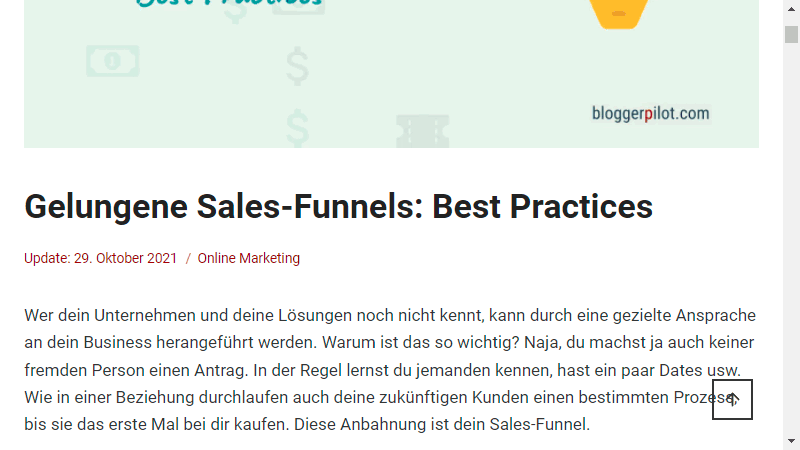
The third example of an introduction for an advice article:
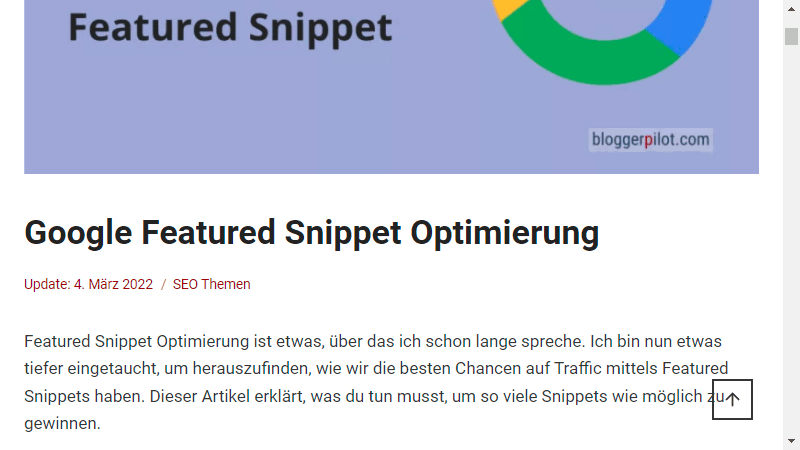
By the way, with the Featured Snippet, you can even grab a spot in front of the paid ads. When writing your blog article, you should place right after the introduction and highlight it specifically.
3. Writing the main body – making your message informative and easy to digest
The main body is the longest part of your article. It is important that your reader does not lose interest or even the overview. Therefore, use as many H2, H3, and H4 subheadings as possible, as well as subheadings, because they help them quickly find their way when skimming.
Effects of the headline levels on the performance of your blog article
The text structures or the headline levels used were also analyzed. What came out was that well-structured blogposts have better chances of success. It is important not to overwhelm readers.
Impact of lists in the main body on performance
The study proves that articles with 5 lists per 500 words get four times more traffic and twice as many social shares. So lists are great for your main body.
4. The right structure and composition of your blog posts to land on top
When choosing your blog structure, you should consider what motivation brings readers to your blog: Is the search intention to gain information or even already an interest to contact or buy?
Decisive for the success of your blog are not only the design and the technical basis, but also the usability. In principle, what the reader understands well, the crawler of the search engine also understands. Therefore, make sure that the structure is simple and clear. The crawler must be able to find its way around so that it classifies your blog article as relevant for the desired topics and displays it high up in the SERPs. There are many tools available to help you with this – some of them completely free of charge.
Your structure should be based on a main keyword and other terms with a high search volume. Websites that cover too many topics are classified by readers and crawlers as confusing and perform worse in the ranking. Your blog offers you the optimal conditions to not lose the thread. You can easily link the individual blog posts to other blog posts at appropriate places.
Studies show that people are overwhelmed with too much information. A simple structure with a focus on the essentials not only helps the search engine to find its way around your blog, but also helps your prospects and customers.
5. Conclusion writing – the best comes at the end, also in your blog article
The first impression counts, but so does the last one. Like the dessert in a 5-course meal, your closing section should also offer a well-rounded conclusion to the topic
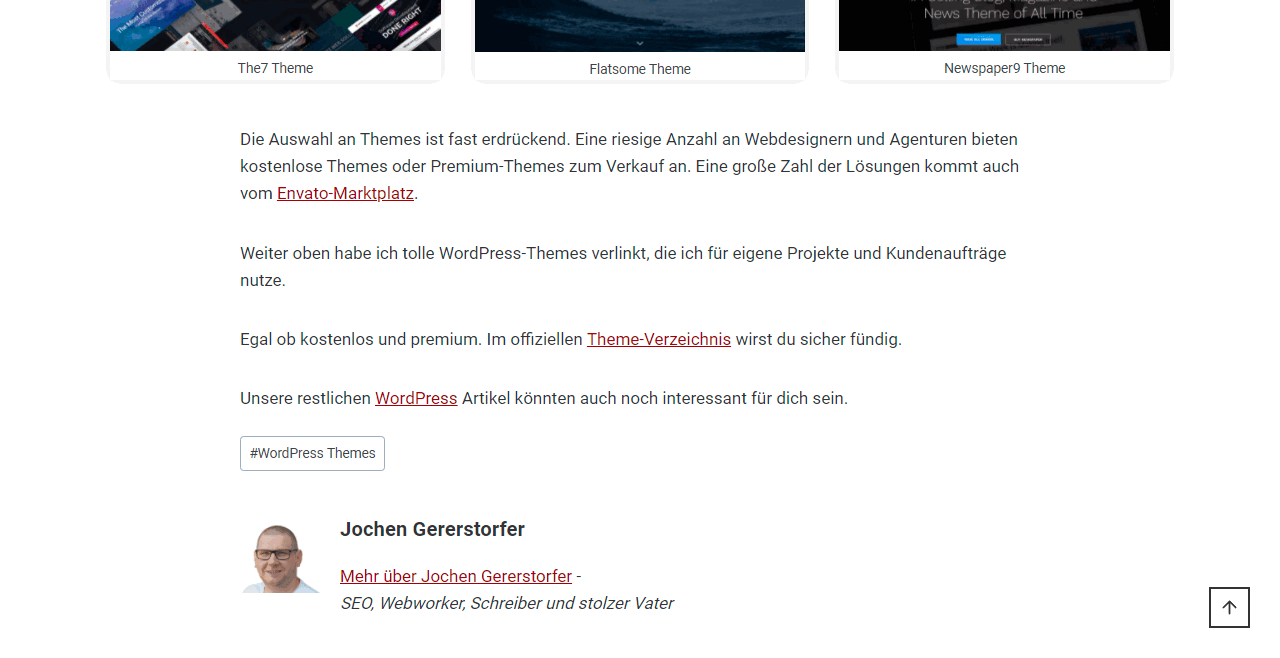

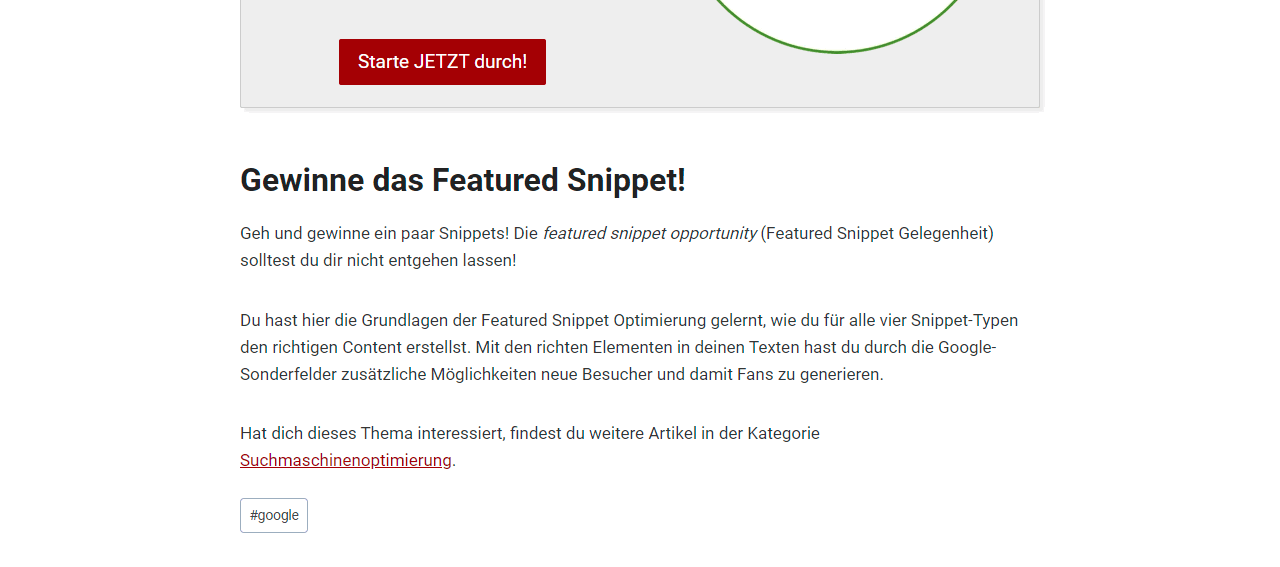
If you have matching posts that may also interest the reader at this point, you can also provide appropriate link text at the end of the blog post.
Which closing type fits best depends mainly on the SearchIntention and the blog article itself. This is how you can end your blog article:
- With a short summary.
- With a question that encourages interaction.
- With a call-to-action like “Send me information”.
- With an “aha” moment that inspires your readers.
- With an exciting cliffhanger like in your favorite show.
The relevance of brand advocates fora blog

Many companies give away their products to celebrities and respected experts. After all, when Heidi Klum talks about her beauty secret – your face cream – the message has a greater impact than the recommendation of a stranger.
Granted, Heidi Klum is a bit of a mouthful. But your goal should be to gain as many popular brand advocates as possible as fans of your blog, because that doesn’t just apply to your products or services. It applies to your blog, too.
Branderati research has shown that brand advocates are about 70% more likely to be considered a trusted source of information.
Branderati
Create websites including blog with free tools like WordPress
You can create websites and blog articles for free with tools like WordPress. In the free version you already have many good options, which are definitely enough for individuals and businesses with manageable requirements
However, it can also make sense to invest a few euros by using paid programs or experts for WordPress & Co. who will implement your every wish. You want to keep it simple? Check out my beginner’s guide for your own blog.
Choose topics for a blog
It’s important that the core topic of your blog is also the topic of your business, so you can easily create a lot of helpful content. In any case, take a close look at which suitable terms and keyword combinations have a high search volume in order to create the appropriate content for your target group. Fill the blog with search engine optimized content that your target group is interested in. This does not always have to be self-promotion.
The best content is interesting content that your competition has not covered at all or only superficially. Then you don’t have to fight the competition. The easiest way to do this is with evergreen content. This means that you pick up content in such a way that it has no expiration date and only needs to be checked for topicality every now and then. This way you can ensure traffic with your blog post for a long time.
You don’t know which topics interest your target group? Then it’s time to do some validation. Talk to your ideal customers and find out what moves them and what arouses their interest. By the way, validation should be the basis for all your marketing and sales activities.
How often new blog posts should appear
The more often the better is only partly true here. It is much more important that the content is of high quality.
2 to 3 articles per week are usually quite feasible and ensure optimal results.
If this does not apply to you, then adjust your blog goals realistically to your situation and try to bring continuity into your blog activities.
Offer content in multiple languages

Whether a multilingual blog makes sense depends on your target audience and your capabilities. It can definitely increase your reach and help you reach new markets. But there is no point in copying your texts into a translation tool and then expecting great success. Different countries have very different situations and points of view.
You should have good language skills and intercultural background knowledge to write multilingual blog posts in a search engine optimized way. You can work with professional copywriters if you don’t know enough about language and mentality yourself. The content of a text can differ greatly in different languages.
Writing blog articles vs. creating social media posts – What pays off to the bottom line?
There are plenty of benefits to having a blog. Wondering if you should be putting your time into content rather than social media posts?
I can’t make that decision for you. In any case, you should think about which channel is better suited to your target audience and your offering.
Blog articles are particularly suitable for products and services that require explanation. Social media is a great way to showcase products that the masses can identify with.
Content repurposing?
The topic of“content repurposing“: For most, a combination of blog and social media marketing turns out to be the best solution. After all, the two marketing areas complement each other perfectly and can push each other.
Publish posts in an optimized and automated way via social media
If you’ve written a new blog post, you should share it with the world. There are ways to let your community know about new blog articles on social media in a largely automated way.
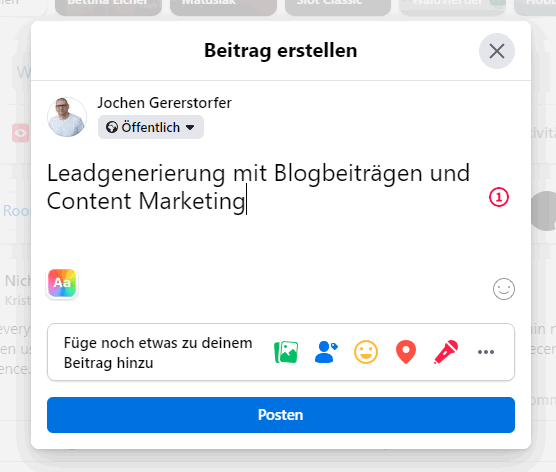
You can also pre-schedule the publication of blog posts created in WordPress. In this case, proceed as follows:
- Status check: In the right sidebar of your backend you will find the status. If necessary, set it from “Draft” to “Publish immediately”
- Select time: Select the day and time you want it to be published.
- Now WordPress shows you that it is scheduled. Now click on “Schedule” to complete the process.
- Now you can choose: Auto-posting or using the best time manager. With auto-posting, the post will be shared on your website and social media immediately after the WordPress post is published.
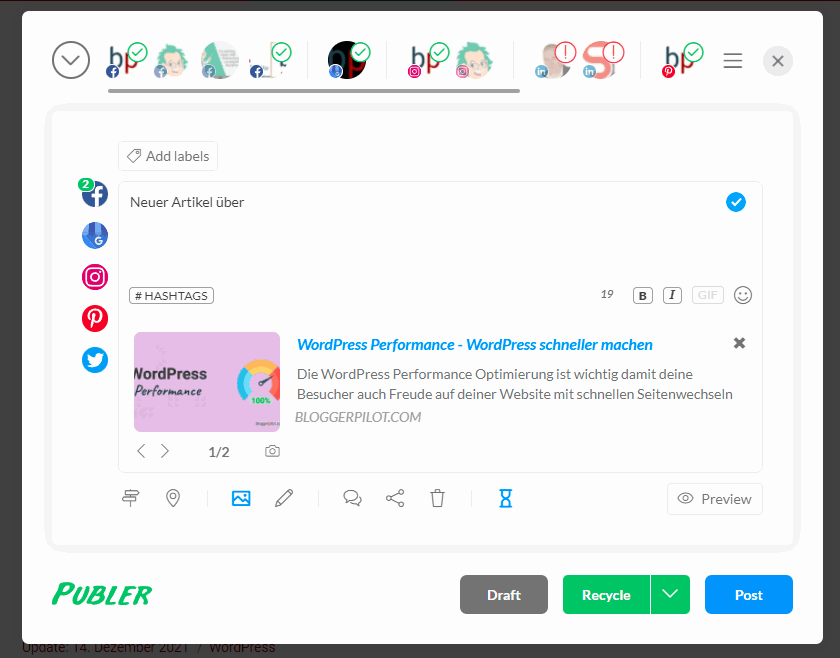
Alternatively, you can use external tools like Hootsuite, Publer and Buffer. This can make sense if you want to publish many types of social media posts and publish blog posts in the same program as all other pre-scheduled posts. In these scheduling tools, you can insert media and texts, as well as conveniently set the publishing time.
Tip: 40 Content Ideas
Conclusion Lead generation with blog articles
Blogs and content are great for lead generation because search engine-optimized blog articles target the very people who are most likely to be interested in your solutions. This is often referred to as inbound marketing.
The creation and maintenance are possible free of charge but requires a little know-how and above all time to achieve long-term content marketing goals. Especially products and services in need of explanation can be explained very well in a blog. Sub-topics can be specifically addressed in individual blog posts, making the blog an excellent source of information for potential customers.
Want to take a closer look at lead generation, Landing-Pages, email marketing, or WordPress? Feel free to look around my blog or just send me a message if I can help you further.






Interesting article, thanks!
I also think that lead generation is very important for business, it allows more people to know about you.